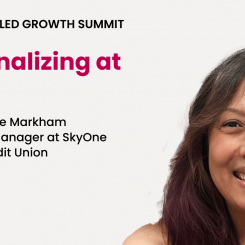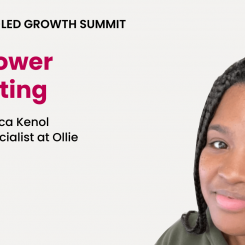Every football fan remembers the over-the-top onslaught of commercials from DraftKings and FanDuel during the 2015 NFL season. With every break in the game, someone would pop up on the screen telling fans they could easily make money every week betting on fantasy sports. People quickly got sick of the ads.
But the two companies were tapping into a key marketing concept known as the familiarity principle. Psychologically, the more times people see something, the more they like it. That’s why traditional advertising is all about getting your brand in front of consumers as often as possible.
But the problem is that thanks to the Internet, people see more ads than ever before. The average person sees about 1,700 banner ads alone every month. As we see more and more ads, the familiarity principle’s power diminishes. Mere exposure is no longer enough. Brands need to establish real connections with their audiences if they want to grow.
That’s the beauty of referral marketing. Every referral shared is one friend suggesting a product to another, and research shows that people trust those recommendations more than any other form of marketing.
To get the best possible results, you need to maximize the friend-to-friend feel of referral and create a deep connection between your brand and your customers. Here are the 12 best ways to hyper-personalize your referral marketing program.
Tried-and-True Tactics
1. Send Referrals from the Advocate’s Email Address
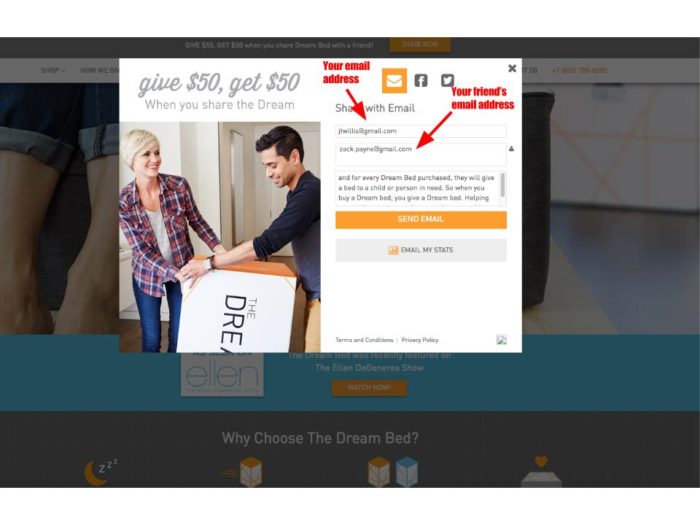
Just over half of the emails the average person receives are promotional ads, compared to just 18.2% that are personal messages from real people. So when advocates share one of your referrals by email, the message has to come from their personal address. Otherwise, customers might mistake it for the promotional email they’re used to ignoring.
Above, check out how socially-conscious mattress provider Dream Bed does it. Seeing their friend’s email address reminds the referral recipient that this isn’t an ad from a faceless company. It’s a hot tip from a friend.
2. Let the Advocate Add a Personal Message
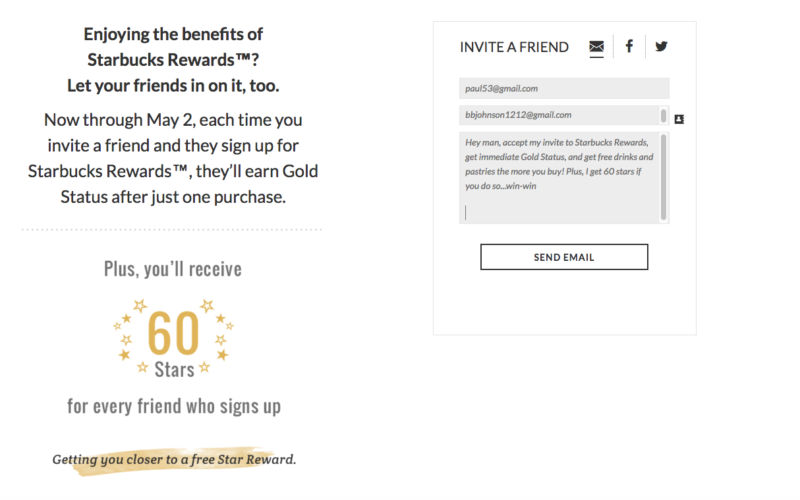
Traditional marketers are used to having total control over their brand’s messaging. Referral marketing can be scary to them because it feels like they’re relinquishing some of that control to customers. What if the customers screw up the image marketers have worked so hard to build for their company?
But here’s the thing. Marketers don’t have as much control as they think to start with. When people discuss the products they use amongst themselves, they’re not parroting the ad content of the companies that make those products. They might borrow from that messaging, but they’re mostly using their own words.
Letting advocates add a personal message mimics that process, which makes the referral process more organic for both sides. Check out how Starbucks does it above. That message is probably similar to how the advocate would describe the Starbucks program if they were shooting the breeze together in person.
This tactic also allows for more personalization down the line. Starbucks could analyze the copy of each personal message, learn how its audience describes the company, and build future messaging around that. When it comes to personalization, referral can pay dividends beyond just the program itself.
3. Use Pictures of the Advocate
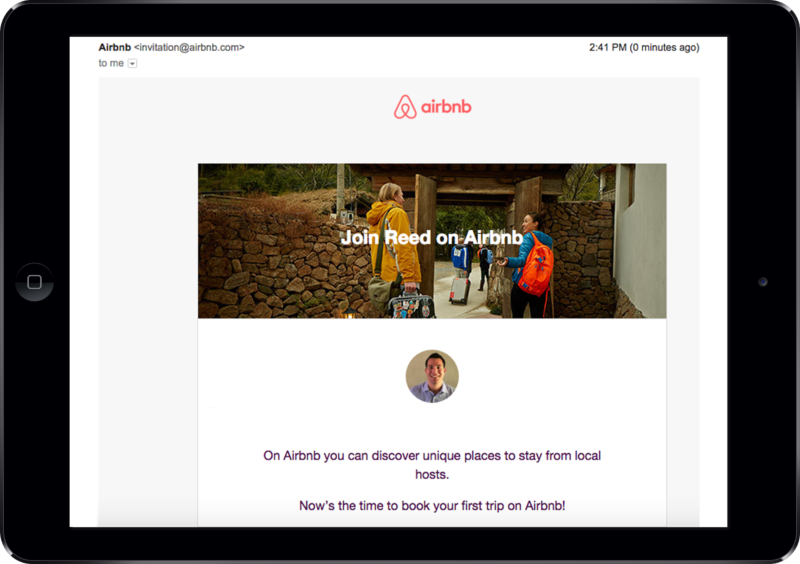
Our internal research has shown that adding a picture of the advocate’s face to a referral increases the rate of conversion by more than 3%. Psychologically, the sight of a human face makes bells go off in our brains, to the point that people routinely pick out human “faces” in inanimate objects. So in the context of referral, seeing the advocate’s face is a powerful, visual reminder that a friend has reached out to you with a product suggestion.
Check out how Airbnb uses this strategy in its referral program.
4. Use the Advocate’s Name as a Referral Code
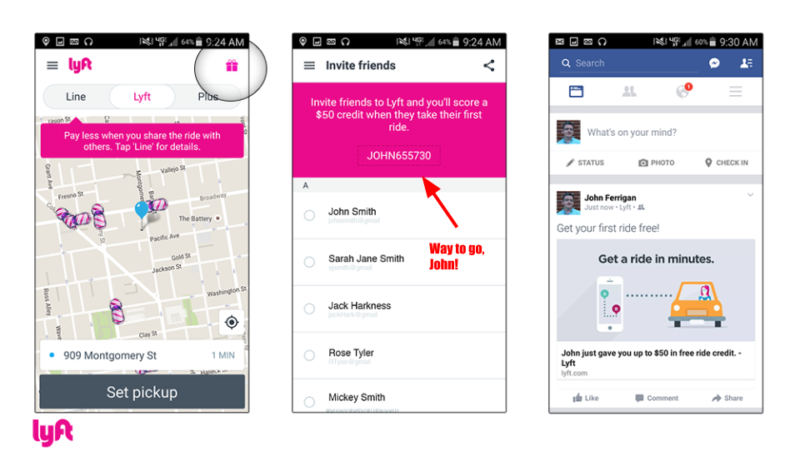
Another simple way to make a referral feel more personal is to use the advocate’s name in the referral code. Check out how Lyft does this above.
That knocks out two birds with one stone. Not only does it remind the friend who the referral came from, but it also makes the code easier to remember. That saves time and makes the referral process smoother.
5. Make a Game of It
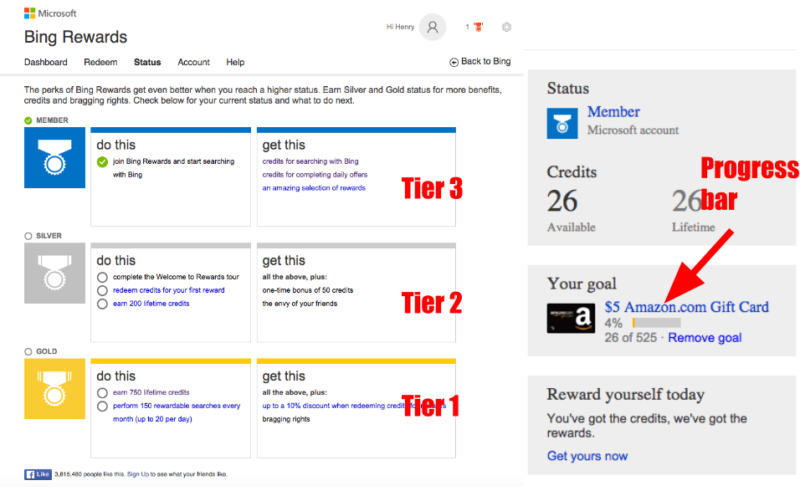
Referral can move Bing Rewards members into a higher membership tier, as seen on the left. On the right is a progress bar telling the user how many points they are from an Amazon gift card.
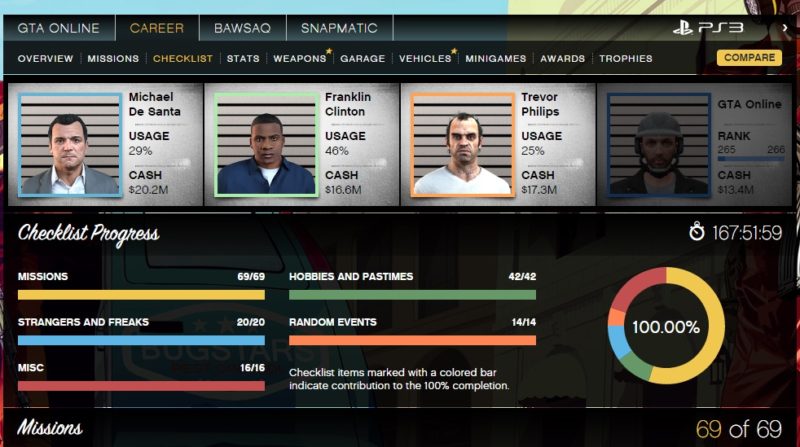
Ever heard of the Zeigarnik Effect? It’s the psychological compulsion people have to fulfill tasks that they know are incomplete. It’s one reason that video games are so addictive. They use visual aids like progress bars that show users how far they’ve gotten and make them want to keep it up. Video games are a passive activity by their nature, but the Zeigarnik Effect turns them into a personal challenge.
Check out how Bing’s combined loyalty and referral program taps into the same phenomenon. Only 499 credits to go for that gift card!
New Personalization Ideas
These are a few ideas borrowed from other marketing channels. They have huge, untapped potential for referral marketing.
6. Retailers can Let Advocates Suggest Specific Items to their Friends
One of the reasons referral marketing is so powerful is that we know our friends’ and family’s needs really well. When people talk to each other about problems they’re looking to solve, it’s natural for us to recommend a product we think could help them.
You can tap into that tendency by letting advocates recommend specific products when they send a referral. For instance, imagine if Home Depot had referral marketing. If a friend told you they needed a new screen door, you could send them a referral with a recommendation for this kit, which would save them the time of looking for the product they need.
7. Ask for Referrals After a Good Review
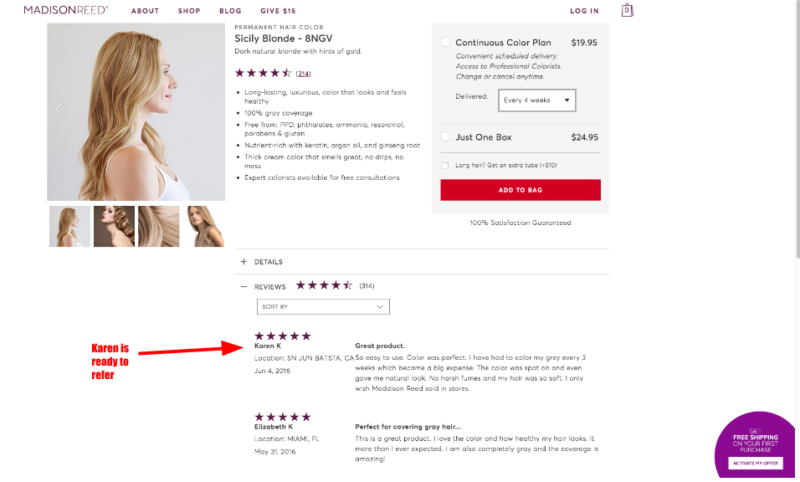
Marketing is all about getting the right call-to-action in front of the right people at the right time. For example, our internal e-commerce research shows that referral CTAs placed on post-purchase pages drive 16x higher referrals.
Another great time to pitch referral? Right after a customer leaves a positive review on your site. You could code your site to automatically send an email with a referral CTA to any customer who leaves a review of four stars or higher, when they’re still thinking about how awesome your product is.
For example, hair care provider Madison Reed has great reviews on the product pictured above. Imagine if it had asked any of those people to share a referral within an hour of when they left the review. It would have felt like a natural next step for those customers.
Now, imagine if any of the reviewers pictured above had gotten an email asking them to share a referral within an hour of writing that review. It would feel like a natural next step for them to take.
8. Data-driven CTAs

Thanks to CRM software, you have mountains of data on everyone who visits your site, how long they stay, and what they buy. The more prolific the customer, the more data you get. Companies like Airbnb use that information to send personalized email alerts. You can also use it to hit your potential advocates with more compelling CTAs.
Let’s say you were running JackThreads’ referral marketing program. If you had a customer who had purchased nothing but hats in from you in the last year, you should make sure any referral CTAs targeted at them use pictures of similar hats. That’s what they like, so it should get them amped to share referrals.
9. Data-driven Rewards
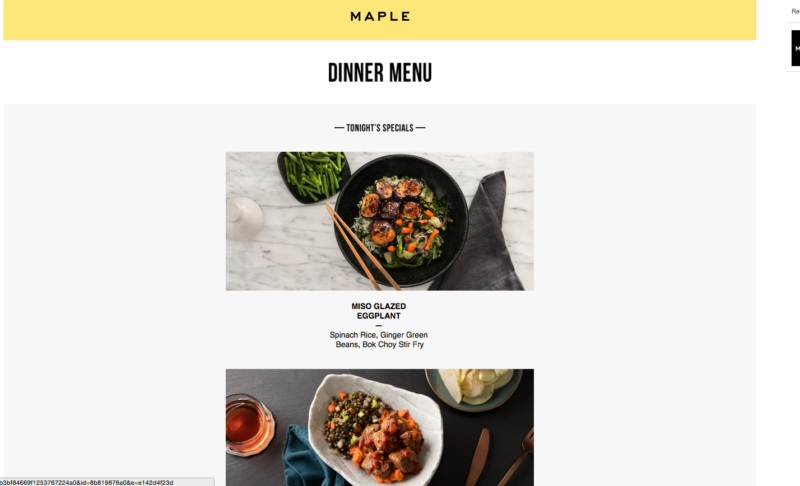
Similarly, you could also use data around individuals’ past purchases to offer more compelling rewards. That would be a great idea for a meal delivery service like Maple.
Let’s say they had a customer who always bought the same meal whenever they saw it. Maple could entice that person to share a referral by offering them money off that particular meal for every customer they referred.
10. Personalized Push Notifications
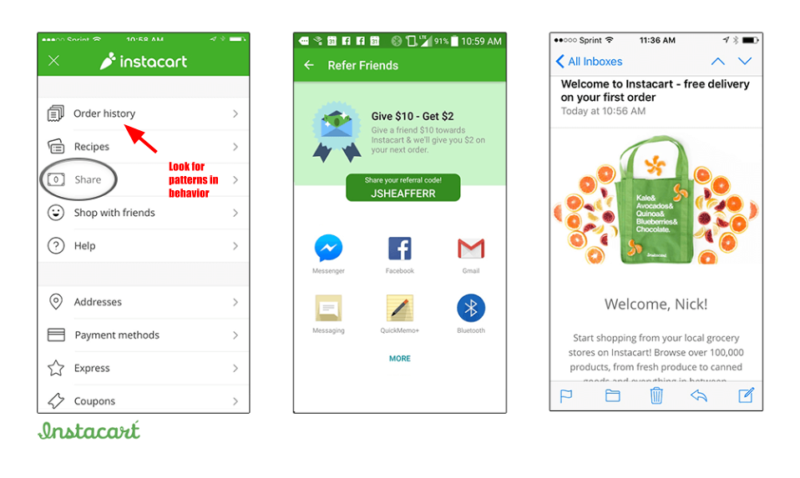
Push notifications are a tricky subject. According to Localytics, around half of consumers find them annoying, while the other half say they’re helpful. But most respondents agreed that they only want push notifications that are personalized to them.
Luckily, apps collect enough data on user behavior to send them personally-tailored push notifications promoting referral.
Let’s say there’s an Instacart user who orders groceries every Sunday at 5:00 PM. Instacart could send that user a push notification inviting them to refer on Sunday at 4:00 PM, just when they’re starting to think about dinner and might be looking to save a few bucks.
11. Single-product Referral Campaigns
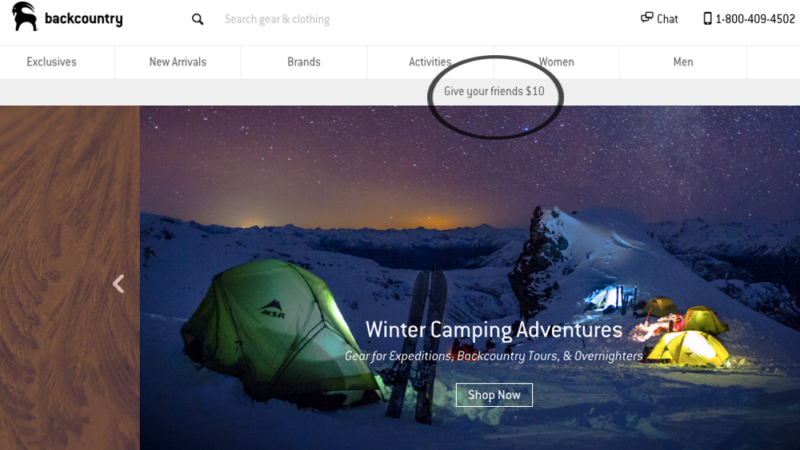
Let’s say your e-commerce store overestimated demand for a new item, and now you’re stuck trying to unload excess inventory. A referral campaign specifically around that item could be the solution. The key would be to target the people who liked the item and ask them to refer their friends specifically to that item.
So, imagine outdoor gear provider BackCountry didn’t sell out these ski pants and wanted to unload the last pairs. They could target every customer who left a good review on them and offer them a higher-than-normal reward for everyone they convinced to also buy a pair.
12. SaaS companies can Let Advocates Choose a Feature Upgrade
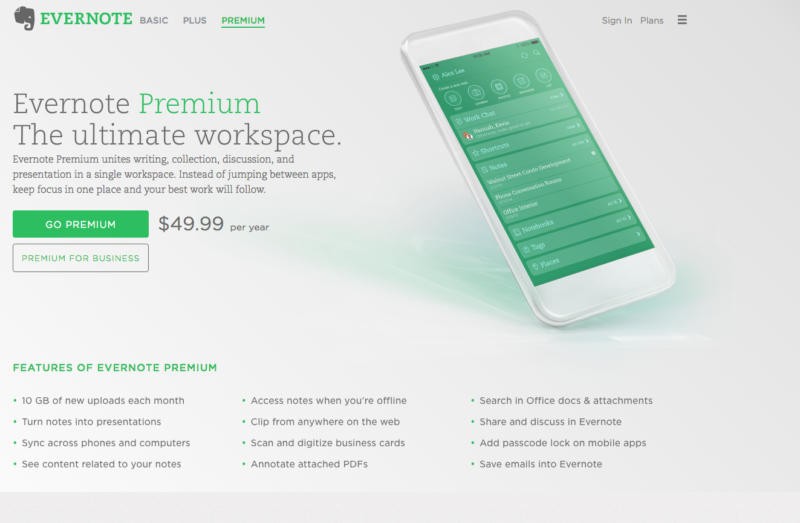
SaaS products are unique in that they offer drastically different features depending on how much the user pays. Consider Evernote. The free product is basically just a note-taking app, while the paid version has sophisticated features geared toward enterprise companies.
To personalize its referral program, a SaaS like Evernote could reward its most prolific advocates by letting them choose a premium feature to use for, say, a month or two. If someone likes the basic version of Evernote, they’re probably curious about the better versions, so this reward is a great incentive. Plus, it also empowers that customer to make a more informed decision about whether to upgrade.
Personalization is the Future
If there’s one thing the rise of Netflix and trend toward unbundling has taught us, it’s this: the “one size fits all” model is dying. The Internet has made every single customer’s voice more powerful, which means they expect a personalized experience with your company.
That has huge implications for your referral marketing program. In the short term, each of these tactics will get you more customers and create a stronger connection between advocates, their friends, and your brand.
But looking at the big picture, this is all about building a referral program that can grow and thrive well into the future. As technology continues to improve, there will only be more opportunities to personalize your product to each user. If you start doing that now with your referral program, you can put yourself ahead of the curve and have a company that’s built to last.

